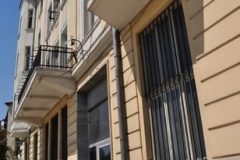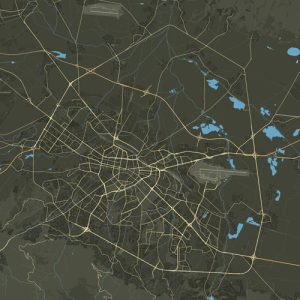The Party House in Sofia served as the principal edifice and the headquarters of the Central Committee of the Bulgarian Communist Party (BKP) throughout the era of the People’s Republic of Bulgaria. Presently, it stands as the secondary structure of the National Assembly, primarily utilized for parliamentary functions, housing the offices of elected representatives and hosting meetings. Positioned in the heart of Sofia, the building stands amidst three squares and two boulevards, creating an imposing architectural ensemble on Nezavisimost Square (Largoto), flanked by the Council of Ministers and the Presidency.
The most striking perspective of the building, featuring its towering section and the pylon adorned with the national flag (a five-pointer symbolizing the People’s Republic of Bulgaria), is visible from Nezavisimost Square, where the entrance to Sofia Hall is located. Access to the building is primarily from the parking area opposite the Tsar’s Palace. Designed by architect Peco Zlatev and his team, the construction spanned six years and was ultimately completed in 1954, encompassing an approximate area of 40,000 square meters. The architectural style employed is neoclassical, characterized by a pronouncedly triumphal and monumental demeanor, emblematically emphasizing the role and influence of the BKP in the nation’s governance. External grandeur and representativeness are achieved through strictly symmetrical facades and expansive Corinthian order forms.
Strategically situated in the capital, the Party House occupies a symbolic location around the Royal Palace, formerly a central city square. During construction in the early 1950s, the site witnessed the removal of several structures damaged in the bombing of Sofia (1943-1944), including the “Balkan” insurance company from the 1930s and 1940s and the “Union Palace” hotel. Presently, the building serves as the home for parliamentary functions and houses the Central Election Commission.






